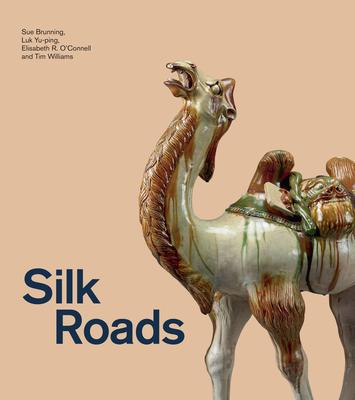Explores how the movement of people, objects, and ideas from 500 to 1000 CE shaped cultures and histories
In the ninth century CE, an Arabian ship sank off the coast of Indonesia. The objects found in the wreckage, which include Chinese ceramics and precious metals, have provided extraordinary evidence of the nature, scale, and diversity of trade between Tang China and the Islamic Abbasid dynasty. This is just one example of the sprawling and extensive networks of contacts and exchanges spanning Afro-Eurasia.
This richly illustrated book challenges the concept of the "Silk Roads" as a simple history of trade between East and West. Focusing on a series of overlapping geographic zones and interspersed with case studies of particular peoples who were active along these networks--seafarers in the Indian Ocean, Sogdians, Vikings, Aksumites, and the peoples of al-Andalus--it reveals remarkable human stories, innovations, and the transfer of knowledge that emerged from these connections.
The volume explores notable examples of contacts, connections, and integrations, while emphasizing the environmental and historical conditions that shaped them, featuring the latest scientific research. The dazzling range of objects includes a wooden panel with the story of the "silk princess" who smuggled the eggs of the silk moth from China; a lion sculpture from Jordan; a miniature wooden pagoda from Japan; wall paintings from the Hall of Ambassadors in Uzbekistan; a kaftan from the Caucasus region; an ivory cross from Spain; and a gold and garnet scabbard slide from the Sutton Hoo burial in Britain.

Silk Roads
Explores how the movement of people, objects, and ideas from 500 to 1000 CE shaped cultures and histories
In the ninth century CE, an Arabian ship sank off the coast of Indonesia. The objects found in the wreckage, which include Chinese ceramics and precious metals, have provided extraordinary evidence of the nature, scale, and diversity of trade between Tang China and the Islamic Abbasid dynasty. This is just one example of the sprawling and extensive networks of contacts and exchanges spanning Afro-Eurasia.
This richly illustrated book challenges the concept of the "Silk Roads" as a simple history of trade between East and West. Focusing on a series of overlapping geographic zones and interspersed with case studies of particular peoples who were active along these networks--seafarers in the Indian Ocean, Sogdians, Vikings, Aksumites, and the peoples of al-Andalus--it reveals remarkable human stories, innovations, and the transfer of knowledge that emerged from these connections.
The volume explores notable examples of contacts, connections, and integrations, while emphasizing the environmental and historical conditions that shaped them, featuring the latest scientific research. The dazzling range of objects includes a wooden panel with the story of the "silk princess" who smuggled the eggs of the silk moth from China; a lion sculpture from Jordan; a miniature wooden pagoda from Japan; wall paintings from the Hall of Ambassadors in Uzbekistan; a kaftan from the Caucasus region; an ivory cross from Spain; and a gold and garnet scabbard slide from the Sutton Hoo burial in Britain.